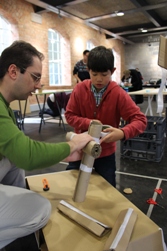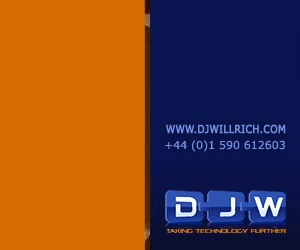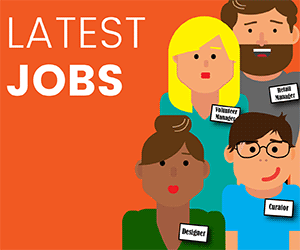In 2011, with a funding crisis looming, the council-owned and run industrial museum was mothballed while a new plan was developed for its future. Having been a museum of industrial heritage, celebrating Derby’s engineering past, the dwindling visitor numbers, along with a failed significant funding application meant that it was becoming no longer viable. A move from council ownership to a Museums Trust gained support and Hannah was brought on board as a consultant to, as she puts it, “play and experiment… using only the resources to hand – the ground floor of the building.” This space was completely stripped back and approximately 16 Rolls-Royce engines from the existing museum were returned to the care of Rolls-Royce. “, says Hannah. The Museum had celebrated Derby’s engineering past, but had not celebrated it’s own past, as the site of the World’s First Factory.
And so with Hannah on board, a new plan for the museum was developed through a community-led programme of events and activities that explored the potential of the ground floor space. Open days took place, and visitors were asked what they wanted from the museum. The answers were diverse: creativity; science; a good cup of coffee; engineering; even for it to be used as a live music venue. These ideas were taken forward in experimental programmes and co-produced with the very people who had suggested them.

The idea to “Re:Make the Museum” was born from that programme, the idea being to allow local people – “citizen curators” and “citizen-makers”, to help design and build their own museum. Derby Museums secured some seed funding to take this forwards, which led to Hannah becoming a full time employee of the organisation, alongside the recruitment of project posts. Hannah and her team then established volunteer groups, “communities of interest” as she calls them, to work out how these elements could be incorporated.
This “different way of working” encouraged people to step up and help. Young people were encouraged to come in and be part of the process. Workshops considered how the space should be used in a flexible way and the “first makers in residence”, London based design experts TILT were appointed. Along with staff from Derby Museums, TILT and architects Bauman Lyons, visitors are not only being asked to consider artefacts but to help to design and manufacture furniture and fittings on-site. Could local expertise be used? This level of involvement all added to the public’s experience of the museum. So where are they up to? As Hannah says, “The thinking is done, the prototyping is done….now the manufacturing is underway!”
Hannah and her team’s experimental approach has allowed the museum to flourish – since 2011, over 20,000 people have taken part in this wonderful experiment in community engagement at the 100+ events which have been held. Capital funding from Derby City Council has allowed the ground floor to be refurbished and it now includes workshop spaces where digital making, benches with hand tools and heavy plant working can all take place. The experimental programming, supported by ACE and Happy Museums funding, sits within the context of community engagement and reflects the themes of engineering, creativity, heritage and technology.

The next stage is to take the process forwards over the coming months; including developing the concept for the next maker in residence and to continue to evaluate and improve. The team at the Silk Mill are encouraging local industry to get involved – Derby is the number one technological city in the UK and the museum wants to celebrate its modern making. As part of this future thinking, they have developed an arts science prize to encourage people to be innovative.
Alongside this programme, Derby Museums are seeking the major capital funding needed to develop the rest of the building – estimated at c£20m. This has gained momentum with support from the local authority and a significant HLF bid currently being assessed. This ambition will lead ultimately to the remaking of a museum that provides a wonderful family day; but is also a significant hub for the city and region – to inspire the next generation of makers through re-connecting local people to their heritage and developing their skills. When I ask Hannah how she sees the Silk Mill she says “We want to be a organisation of enlightened thinking with a museum that lives those principles. We reflect back on the story of the building and the objects it houses, the talents in the city and the ambition for our young people, and take inspiration for the future.”
Back to top




